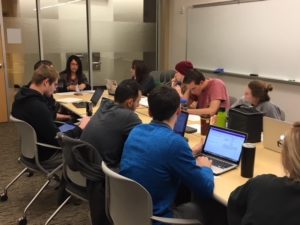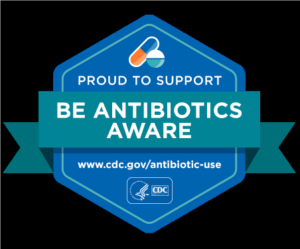The UNMC College of Medicine offers a unique Enhanced Medical Education Track (EMET) program which provides an opportunity for medical students to delve into particular disciplines of interest in the field of medicine throughout their four year degree program. Track students attend seminars, preceptorships and complete a research project culminating in a poster or conference presentation. More information about the EMET program can be found here.
One of these tracks is HIV medicine, and we are always excited to have track students come through our HIV clinic. This month we have been fortunate to have a phenomenal M4 student, Rebecca Osborn, in our HIV clinic. She has a keen interest in Infectious Diseases and HIV medicine, particularly linkage to care and barriers to antiretroviral therapy adherence. Together with her mentor Dr. Sara Bares, Rebecca worked on a research project aimed at evaluating adherence to antiretroviral therapy in the HIV clinic, which she expertly presented to the HIV team at the Specialty Care Clinic on October 17, 2017. She provided us with a summary of her research below:
With the advent of effective antiretroviral therapy, consistent medication adherence has become the backbone of HIV Care. My study evaluated the impact of a collaborative care program between the Nebraska Medicine HIV team and a community pharmacy adjacent to the clinic to offer specialized services, including provision of customized adherence packaging, adherence checks, and the option of home delivery of medications, to a group of patients at high risk for poor adherence. Many of these patients had a history of viremia and uncontrolled HIV for several years prior to taking part in the program. We found that a collaborative pharmacy-led initiative to improve medication adherence led to improved virologic suppression in our selected patient population.
Rebecca plans to present her findings at an upcoming conference and will be submitting for publication shortly. We wish her success with her upcoming residency interviews and know she will be an invaluable addition to the residency program of her choice!
Content courtesy: Rebecca Osborn, UNMC MD candidate ‘18













Recent Comments